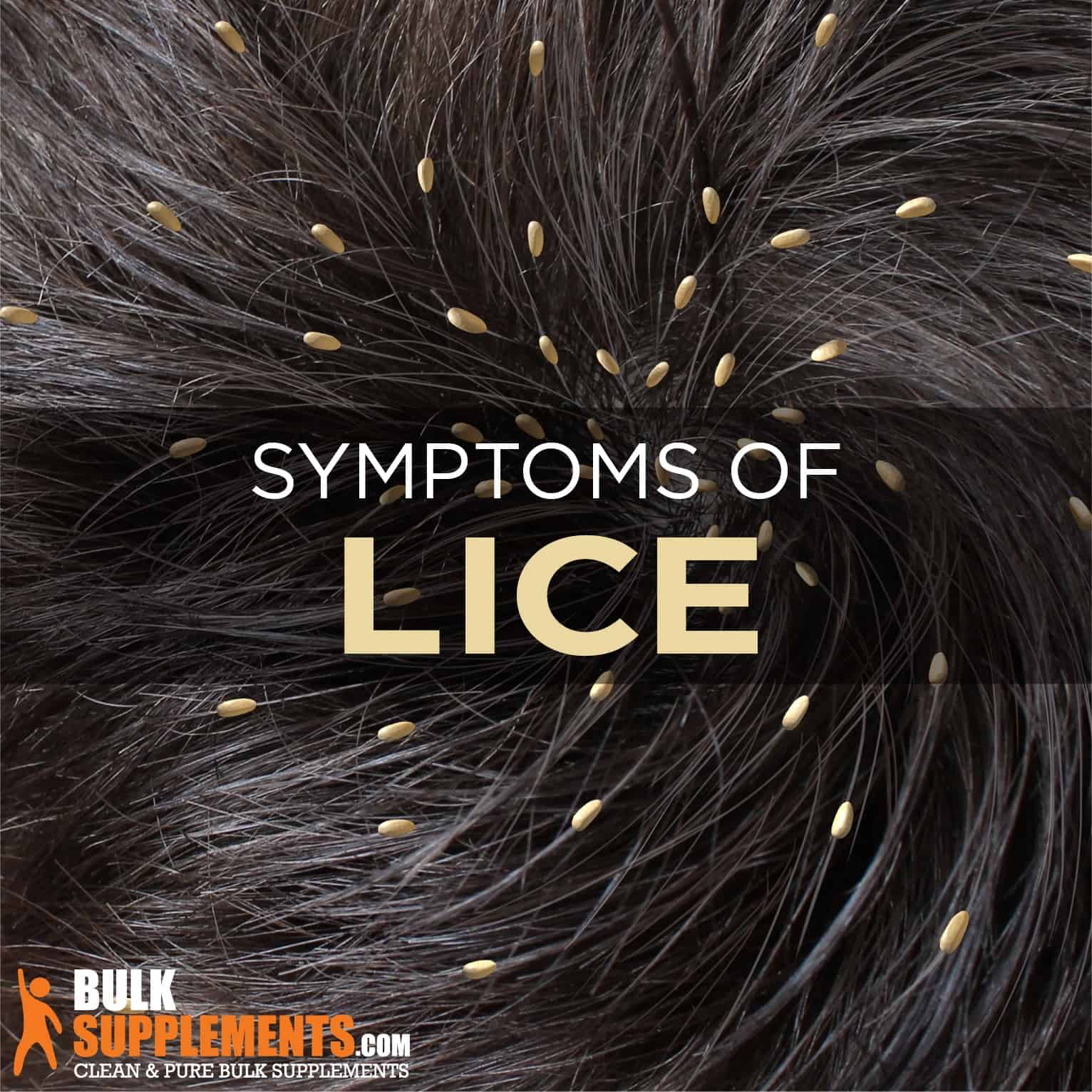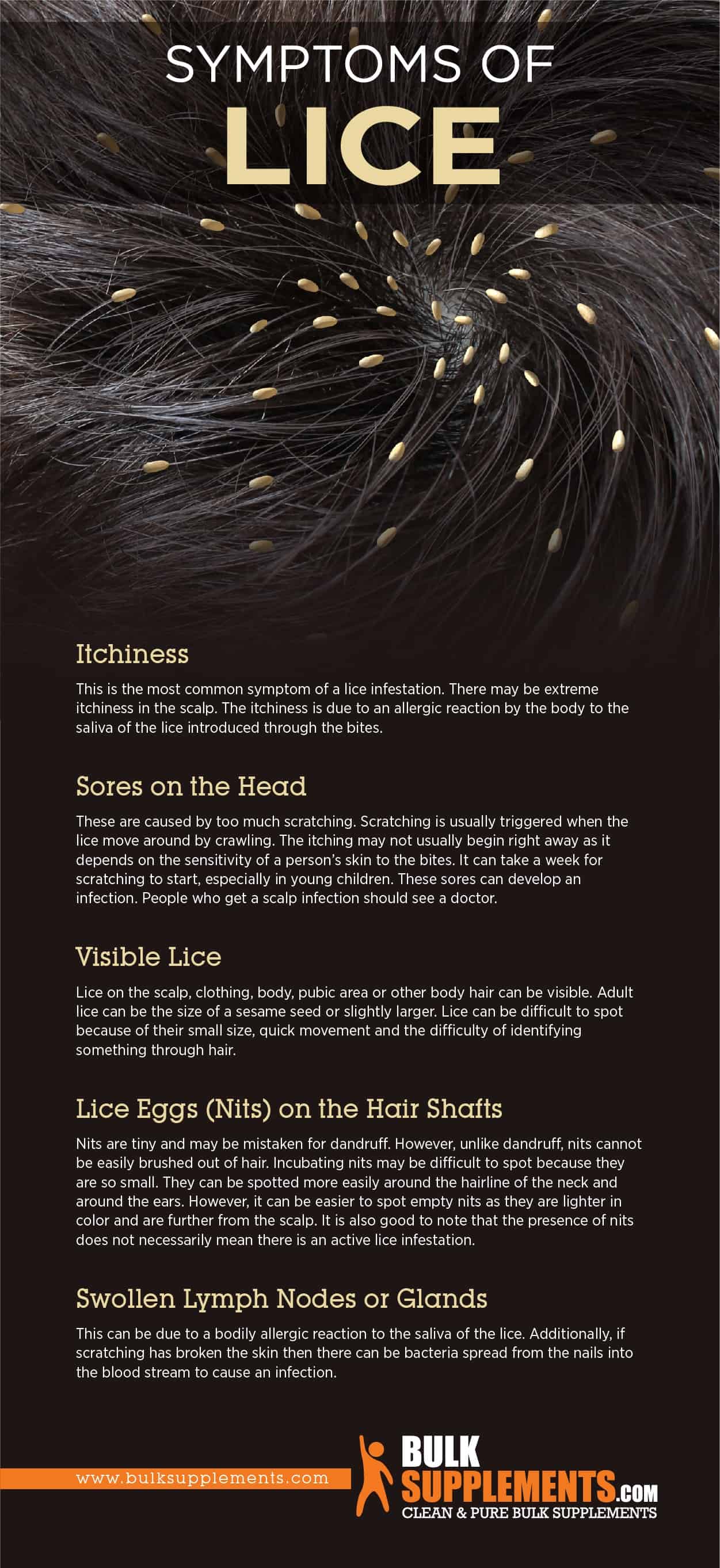Lice: Symptoms, Causes & Treatment
by James Denlinger Digital Marketing Strategist
What are Lice?
Lice is a common problem among preschool and elementary school-aged children. It is estimated that around 6 to 12 million lice infestations occur in the United States annually among children aged 3 to 11 years. Lice are tiny, wingless, parasitic insects (about 2-3 millimeters long) found living among human hairs and usually feed on small amounts of blood drawn from the human scalp. They can also be found elsewhere on the body including the pubic area and long facial hair like beards. Lice are easily spread through personal contact and the sharing of belongings like caps, combs and brushes. Anyone who comes into contact with the infected person is at the greatest risk. Lice usually move by crawling — they cannot fly or hop.
Lice can be treated. The affected person, infected family members and the home should all be treated. A medicated shampoo, a cream rinse or lotion might be recommended to help kill the lice. The best form of treatment would be to kill the lice and their eggs.
Getting a lice infestation does not indicate poor hygiene. It has nothing to do with personal hygiene as anyone can be infested with lice.
Types of Lice
There are three types of lice — head lice, body lice and pubic lice. They are all from the same parasite family, but are of a different species. Only the body lice are known to spread disease.
Head Lice
These lice are found on the scalp. They attach their eggs to the base of the hair shafts. These eggs can be difficult to see and usually take about nine days to hatch. They are found worldwide and are the most common in young children who attend day care or elementary school. Head lice are most common among young girls aged between 5 to 11 years — this is because socially and culturally girls tend to wear their hair long, which increases the likelihood of contracting lice. Boys who wear their hair long are equally likely to contract head lice. Head lice can easily be seen at the nape of the neck and ears.
Body Lice
These lice mostly thrive in clothing and on bedding and move onto the skin to feed. Body lice mostly affect the individuals who fail to bathe or launder clothing regularly. They can also infect people living in cramped, crowded conditions like military barracks. Body lice can transmit severe health diseases such as relapsing fever, trench fever and typhus.
Pubic Lice
These are also known as crabs. They are mostly found on pubic hair and skin and anal areas. They are typically transmitted among adolescents and adults through sexual contact. Pubic lice can also be transmitted to young children by close contact with parents (x). Though rare, pubic lice can also be found on coarse body hair like that of the eyelashes, chest and eyebrows.
Symptoms of Lice
Lice move very quickly, so it is not always easy to detect them. Some people might not be aware of a lice infestation because they might not have any symptoms at all.
Itchiness
This is the most common symptom of a lice infestation. There may be extreme itchiness in the scalp. The itchiness is due to an allergic reaction by the body to the saliva of the lice introduced through the bites.
Sores on the Head
These are caused by too much scratching. Scratching is usually triggered when the lice move around by crawling. The itching may not usually begin right away as it depends on the sensitivity of a person’s skin to the bites. It can take a week for scratching to start, especially in young children. These sores can develop an infection. People who get a scalp infection should see a doctor.
Visible Lice
Lice on the scalp, clothing, body, pubic area or other body hair can be visible. Adult lice can be the size of a sesame seed or slightly larger. Lice can be difficult to spot because of their small size, quick movement and the difficulty of identifying something through hair.
Lice Eggs (Nits) on the Hair Shafts
Nits are tiny and may be mistaken for dandruff. However, unlike dandruff, nits cannot be easily brushed out of hair. Incubating nits may be difficult to spot because they are so small. They can be spotted more easily around the hairline of the neck and around the ears. However, it can be easier to spot empty nits as they are lighter in color and are further from the scalp. It is also good to note that the presence of nits does not necessarily mean there is an active lice infestation.
Swollen Lymph Nodes or Glands
This can be due to a bodily allergic reaction to the saliva of the lice. Additionally, if scratching has broken the skin then there can be bacteria spread from the nails into the blood stream to cause an infection.

Body Lice Bites
These can cause a thickened or darkened skin, especially around the groin or waist area. This is experienced by people infested with body lice, especially if it has been there for a long time. People with body lice usually have tiny, red, pinpoint holes in the skin. They may also have hives and scratch marks if there was intense scratching that causes a break in the skin. This can also cause a bacterial infection. Symptoms of body lice bites are more common on the abdomen, shoulders and buttocks.
Pubic Lice Bites
These bites cause bluish gray spots on the affected areas like the chest, thighs and buttocks. They can also cause the lymph nodes to swell. If pubic lice infest the eyelashes, they can cause eye itching, irritation and a burning sensation around the eye.
Causes of Lice
Individuals can get lice infestation if they come into contact with lice or their eggs. These eggs normally hatch in about seven days. Since lice cannot fly or walk, they can be spread through contact only.
Sexual Contact
This can especially help to spread pubic lice, and most commonly affects adults. Pubic lice in children could be an indication of sexual exposure or abuse.
Sharing of Personal Items or Close Contact
Sharing among friends or family members can lead to lice. These items include combs, brushes, clothing, headphones, towels, pillows and blankets. Close interaction among children or family members (hugging, for example) can also lead to lice.
Contact with Contaminated Soft Fabrics
Transmission of lice through soft furnishings like couches and bedding is common because, although lice can only live for about 24 hours away from a host, the eggs take 7-10 days to hatch. So, if an infected person has come into contact with a soft furnishing, it will take around 12 days for the lice and the eggs laid there to die.
Conditions Similar to Lice
There are certain health conditions or things in the hair that may be visually similar to head lice or cause similar symptoms.
Hair Casts
They are white, tube-like debris found around the hair shaft. Their length usually ranges from 2 to 8 mm. They are rare and are often associated with other skin conditions. They can slide easily with the hair during combing, unlike nits, which stick and are hard to remove. Hair casts can be removed with a fine-toothed comb or coal tar shampoo. An individual with light-colored hair should use coal tar shampoo with care as it can discolor their hair.
Dandruff
Not only can dandruff look similar to head lice, but it can also cause similar symptoms like itching of the scalp. Dandruff is a scalp condition whereby the skin pulls away from the scalp in white flakes. Unlike nits, dandruff lies on the scalp and often comes away easily.
Scabies
Scabies is caused by small insects that dig into the skin and cause irritation. They usually affect the wrist, ankles and fingers rather than the scalp and head.
Diagnosing Lice Infestation
It is possible to detect head lice by looking closely through the scalp and hair for nits and adult lice. However, looking for an adult can be difficult because they are few and run away quickly.
If there are visible nits close to the scalp, then that would be a confirmation that the person is infested. If the nits are a quarter of an inch from the scalp, that would signify an older infestation.
Treatment for Lice
There are several lice treatment methods available without a prescription. Treating lice can sometimes be challenging due to factors like the severity of the infestation, lice that are resistant to some forms of treatment like shampoos and re-infestation due to a workplace or school with a lice problem. When this happens, more aggressive approaches like removal of nits, frequent shampoo washing with a lice shampoo and consulting a health professional should be done.
Anti-itch treatments are available, but they can only offer temporary relief from the itching without addressing the underlying lice infestation.
Wet Combing
This involves wetting the scalp and hair gently with an air conditioner to try and stun the head lice. Later the hair is combed to kick the head lice and nits out.
Lice Shampoo
In cases where shampoo is used to treat head lice, it is usually left to stay on the scalp for a longer time.
Most of the recommended shampoos will require a second treatment a week or so after the initial application. People should carefully read the instructions on the shampoo package and ensure they understand and follow them.
Treating Soft Furnishing and Clothes
To prevent re-infestation, it is important to also treat the clothes, bedding and soft furnishings of the infected person. This can be done through medicated washing liquid or washing and drying on very high heat (where it is viable to do so, read the label to ensure you don’t damage the clothes).
Supplements for Lice
Pure Biotin Powder
It is believed that this supplement, also known as vitamin B7 or vitamin H, is good at promoting healthy hair, skin and nails. A single serving of pure biotin powder is small, but very potent. Good measurements should be done when taking this supplement.
Coconut Oil
This is a natural, anti-lice treatment oil. It is believed that the lauric acid found in coconut oil can help kill lice. It is good for people who cannot tolerate the stronger form of treatment. Coconut oil is also very effective when coupled with anise spray.
Lavender Oil
This oil is considered to be a natural insect repellent. Its smell has the ability to drive insects away. Lavender oil may be a good home remedy that may help repel lice. It can suffocate and repel lice, but not their eggs.
Tea Tree Oil
Although more research is required to determine how effective tea tree oil is in treating lice, one study published in Parasitology Research claimed that it may have the ability to kill lice in the nymph and adult stages of its development.
The Bottom Line
Any individual, especially young children, and parents of young children are likely to come into contact with lice. This is because school-going children are the most affected when it comes to lice infestation. Lice infestation does not necessarily indicate poor hygiene as everyone is susceptible to infection.
Sponsor Ads
Created on Mar 5th 2020 23:03. Viewed 550 times.



